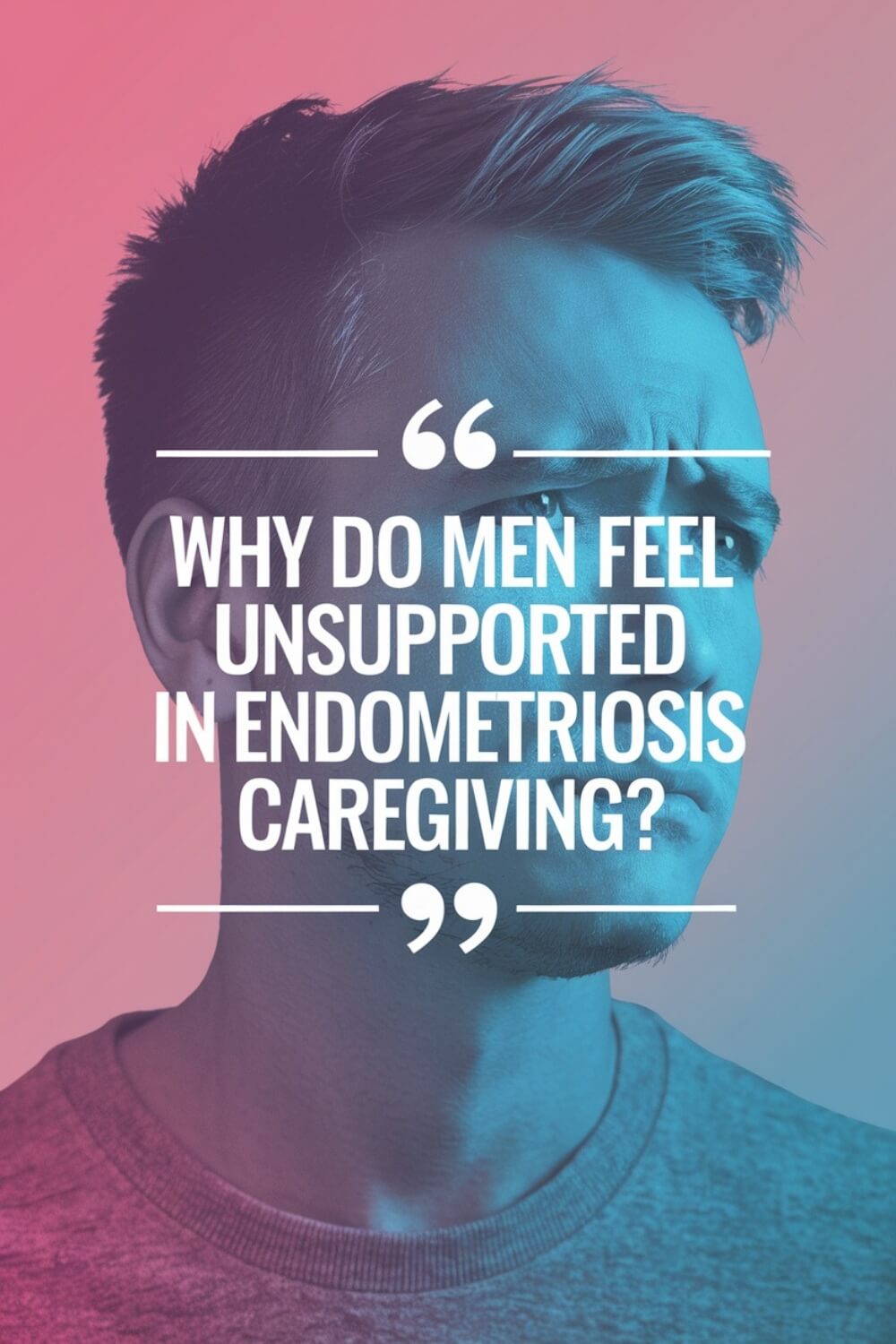Why Do Men Feel Unsupported in Endometriosis Caregiving?
As I sat beside my wife during her latest treatment for endometriosis, I felt frustrated and isolated. The invisible illness brought us constant challenges that seemed ignored by others. I yearned for more support from healthcare and loved ones but felt lost and alone. Today, I write the answer to why do men feel unsupported in endometriosis caregiving…
Endometriosis affects 176 million women and girls worldwide, causing significant pain and impact on relationships. Research shows that those with endometriosis often feel lonely and unsupported. This is worsened by body image issues and fear of stigma.
As a male caregiver, I’ve realized my role is often overlooked. The emotional toll and compassion fatigue are overwhelming. Gender-based barriers in managing chronic diseases add to our challenges.
In this article, we’ll look at the unique struggles of male caregivers for those with endometriosis. We’ll discuss the disease’s psychological and social effects. We’ll also highlight the need for a more supportive environment for all affected by this condition.
- The Psychological Burden of Endometriosis
- Endometriosis and Body Image Disturbance
- The Role of Anticipated Stigma
- Men unsupported in endometriosis caregiving
- Research Aims and Hypotheses
- Prevalence of Body Image Issues in Endometriosis
- Gender-Based Barriers in Chronic Disease Management
- Cultural and Socioeconomic Factors Affecting Women's Health
- Introducing "Endo-Tool: Endometriosis for Men"
- The Gender Pain Gap: Downplaying Women's Pain
- Impact on Employees and Companies
- Strategies to Support Women's Health at Work
- Fostering an Inclusive and Supportive Culture
- Source Links to Why Do Men Feel Unsupported in Endometriosis Caregiving
The Psychological Burden of Endometriosis
Research on endometriosis shows it can make social life hard. People with endometriosis often feel emotional loneliness and diminished social support. They face physical challenges like chronic pain and fatigue that make going out tough.
They also worry about finding bathrooms quickly because of nausea and other symptoms. This leads some to have smaller social circles, making them feel left out. Endometriosis can also hurt relationships, with many saying it has damaged their romantic bonds.
But what is endometriosis in the first place?
If you want to learn more about endometriosis, I wrote an “Endo-Tool, Endometriosis for Men” e-Book.
You can get the 1st Chapter of the e-Book for FREE, and if you like it, you’ll get a Whopping 33% Discount on the Whole Book, plus discounts on other helpful tools. You have nothing to lose but a lot to gain!
The first chapter alone contains all the comprehensive medical knowledge about endometriosis, including:
- What is endometriosis?
- What are the symptoms?
- What causes endometriosis?
- What does endometriosis look like?
- What are the stages?
- What are the types?
- What is adenomyosis and how is it related to endometriosis?
- Why do some women develop severe endo and others don’t?
- Does endometriosis cause infertility?
- How is endometriosis diagnosed?
- Do types and stages affect the treatment?
- Recurrence of endometriosis after excision surgery.
FREE Chapter of “Endo-Tool”
Endometriosis e-Book for Men
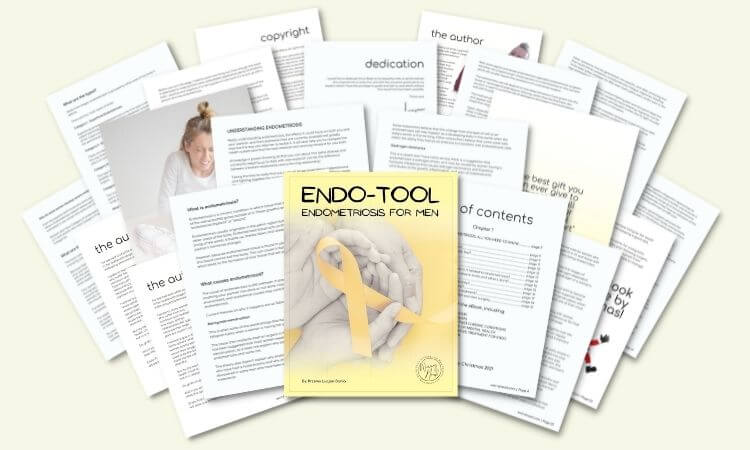
Emotional Loneliness and Diminished Social Support
A recent study found people with endometriosis often struggle with body image disturbance (BID), emotional loneliness, and feeling less supported. BID was linked to more loneliness and less support. The fear of being judged by doctors also plays a role in how they feel supported.
Waiting 6 to 8 years to get diagnosed can make people feel isolated. This long wait can make them feel like they have no one to turn to. The fear of being judged by doctors makes it harder for them to seek help, adding to the emotional weight of endometriosis.
Endometriosis and Body Image Disturbance
Body image is how we think and feel about our body. For those with endometriosis, it’s a big deal. The pain, changes, and impacts on daily life can make them worry a lot about how they look and feel.
People with endometriosis often feel frustrated and hopeless. They might feel like they can’t wear the clothes they want because of bloating and weight gain. This makes them feel embarrassed and like they don’t fit in.
A study found that those with endometriosis have big body image issues. They feel lonely and don’t think they have much support. The study showed that feeling judged by doctors makes things worse.
Endometriosis can really hurt relationships and how we feel about ourselves. Many people with it feel isolated and lonely. Lack of support makes the emotional and mental pain even harder to bear.
It’s important to understand how endometriosis affects body image and social life. This can help improve the lives of those dealing with this condition.
| Key Findings | Statistics |
|---|---|
| Participants | 212 individuals diagnosed with endometriosis |
| Mean scores | Indicated high levels of Body Image Disturbance (BID), emotional loneliness, and diminished perceived social support |
| Association | BID was significantly associated with greater emotional loneliness and lower perceived social support |
| Moderation effect | Anticipated stigma from healthcare workers moderated the association of BID with perceived social support, leading to poorer perceived support when anticipated stigma was high |
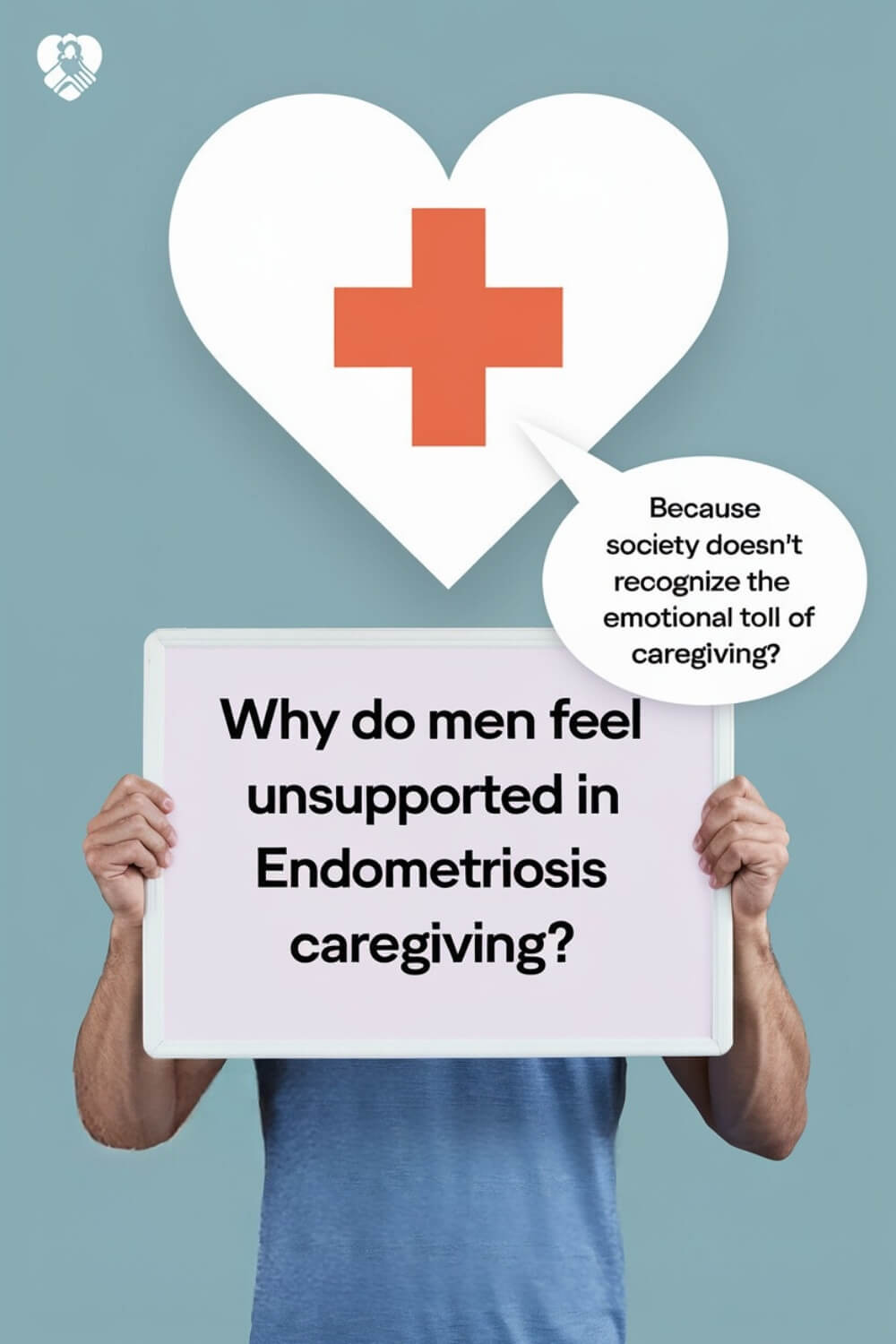
The Role of Anticipated Stigma
Living with endometriosis can be tough, and one big challenge is the fear of stigma. This fear makes us worry about what others might think or say. It’s hard because we’re expected to keep our periods private.
Stigma makes it hard to get the medical help we need. Sometimes, doctors don’t take our pain seriously. This makes us feel alone and unsure if we’re really in pain.
We also might not want to talk about our pain with others. We’re afraid of being seen as weak or emotional. This fear stops us from sharing our struggles.
Concealing Endometriosis-Related Distress
Keeping our pain to ourselves is called self-silencing. We do this to avoid making others uncomfortable. But it can make us feel lonely and without support [https://worryhead.com/what-can-you-do-to-support-your-caregiving-partner/].
It’s important to talk about stigma to help those with endometriosis and their loved ones. By being open and understanding, we can help break down these barriers. This way, we can get the care and support we need.
Men unsupported in endometriosis caregiving
Men who support their partners with endometriosis often feel left out. They carry a heavy emotional load, feeling isolated and misunderstood. Healthcare providers and friends often don’t get it.
Recent stats show men make up a small part of caregivers. This is because society expects women to care for others. So, men’s struggles are often ignored.
Dealing with the healthcare system and managing symptoms is tough for them. They also need emotional support, but often get none. This leaves them feeling alone and unsupported.
Endometriosis mainly hits women, but men are affected too. It can take 10 years to get a diagnosis. The invisible nature of the disease makes caregiving even harder.
The emotional toll of endometriosis isn’t just on the person with it. Men face unique challenges that need more attention. They need support from doctors, lawmakers, and society.
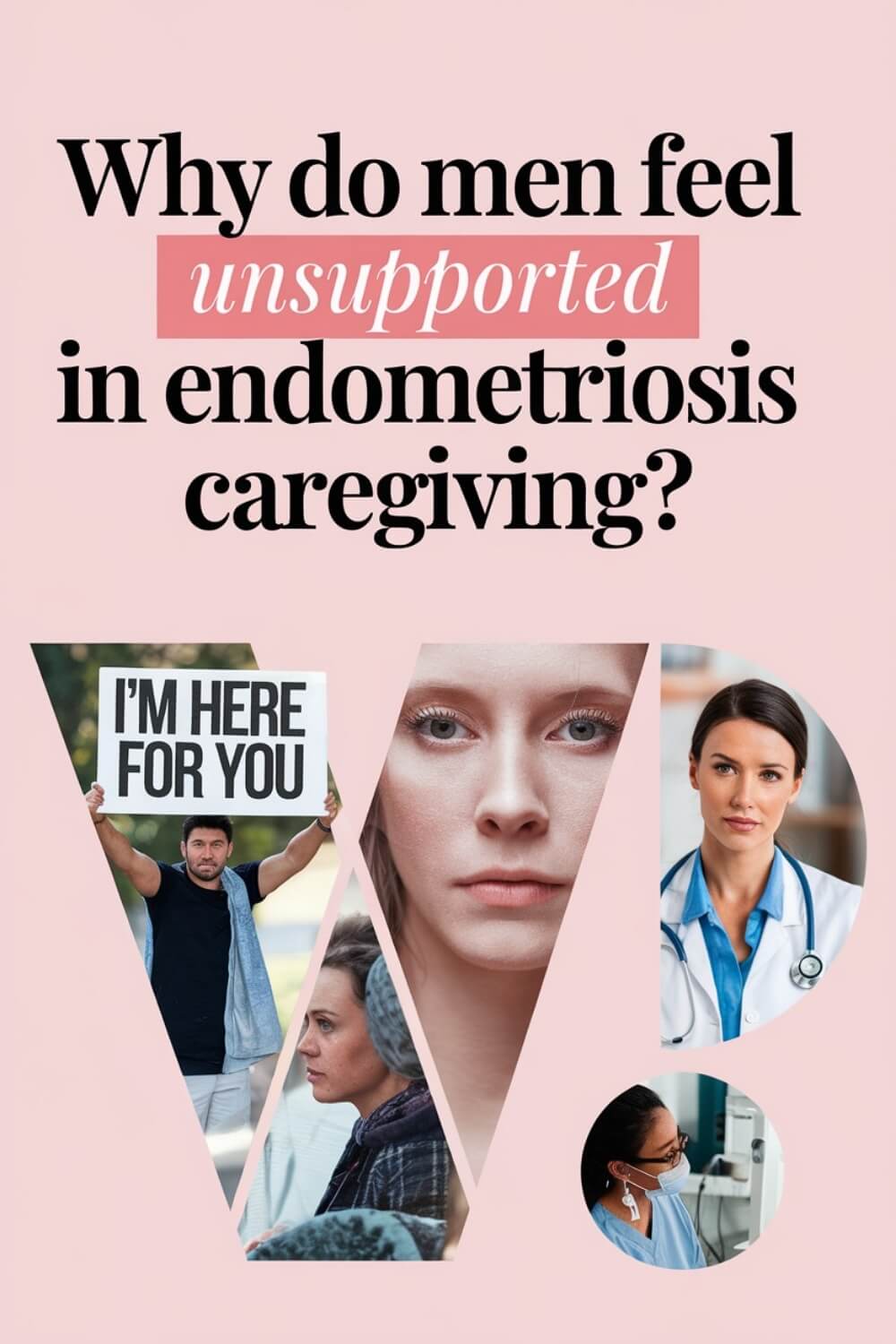
Research Aims and Hypotheses
This study aimed to look deeper into how body image disturbance (BID) affects social life. It focused on feelings of loneliness and perceived social support. It also explored if anticipated stigma plays a role in these connections.
We thought that more BID would lead to feeling lonelier and having less social support. Anticipated stigma was expected to make these effects worse. We also believed that BID would lower social support, and stigma would make this effect stronger.
Our study had 212 participants with endometriosis. They showed high levels of BID, emotional loneliness, and low social support. BID was linked to more emotional loneliness and less social support. Anticipated stigma from healthcare workers made these effects worse.
Previous studies found a strong link between BID and social problems like loneliness and low social support. Anticipated stigma, or fear of being judged, can stop people from getting medical help. This fear can make social problems caused by BID even worse.
This study aimed to understand the mental health challenges of endometriosis better. It showed how important it is to tackle body image issues and stigma. This can help improve their social life and overall happiness.
The study builds on previous research on the emotional struggles of male partners. It highlights the need for a full understanding of endometriosis’s effects.
Prevalence of Body Image Issues in Endometriosis
Women with endometriosis face unique mental health challenges. Recent studies show a high rate of body image disturbance (BID) among them. This affects their social functioning greatly.
Research shows that those with endometriosis have very high BID scores. This means they are deeply unhappy with how they look. They also feel emotional loneliness and lack social support.
Studies found a strong link between BID and emotional loneliness. BID also leads to more social loneliness. This shows the big mental health hurdles for those with endometriosis.
It’s clear we need to focus more on the mental health of women with endometriosis. Understanding BID’s impact helps healthcare and support groups offer better care. This care should address both physical and mental health.
Women with endometriosis need better mental health care. Understanding body image disturbance helps. Healthcare and support groups can then offer more complete care.
| Metric | Findings |
|---|---|
| Body Image Disturbance (BID) | High levels of BID reported among individuals with endometriosis |
| Emotional Loneliness | BID significantly associated with greater emotional loneliness |
| Perceived Social Support | BID linked to lower perceived social support |
| Social Loneliness | BID associated with increased social loneliness |
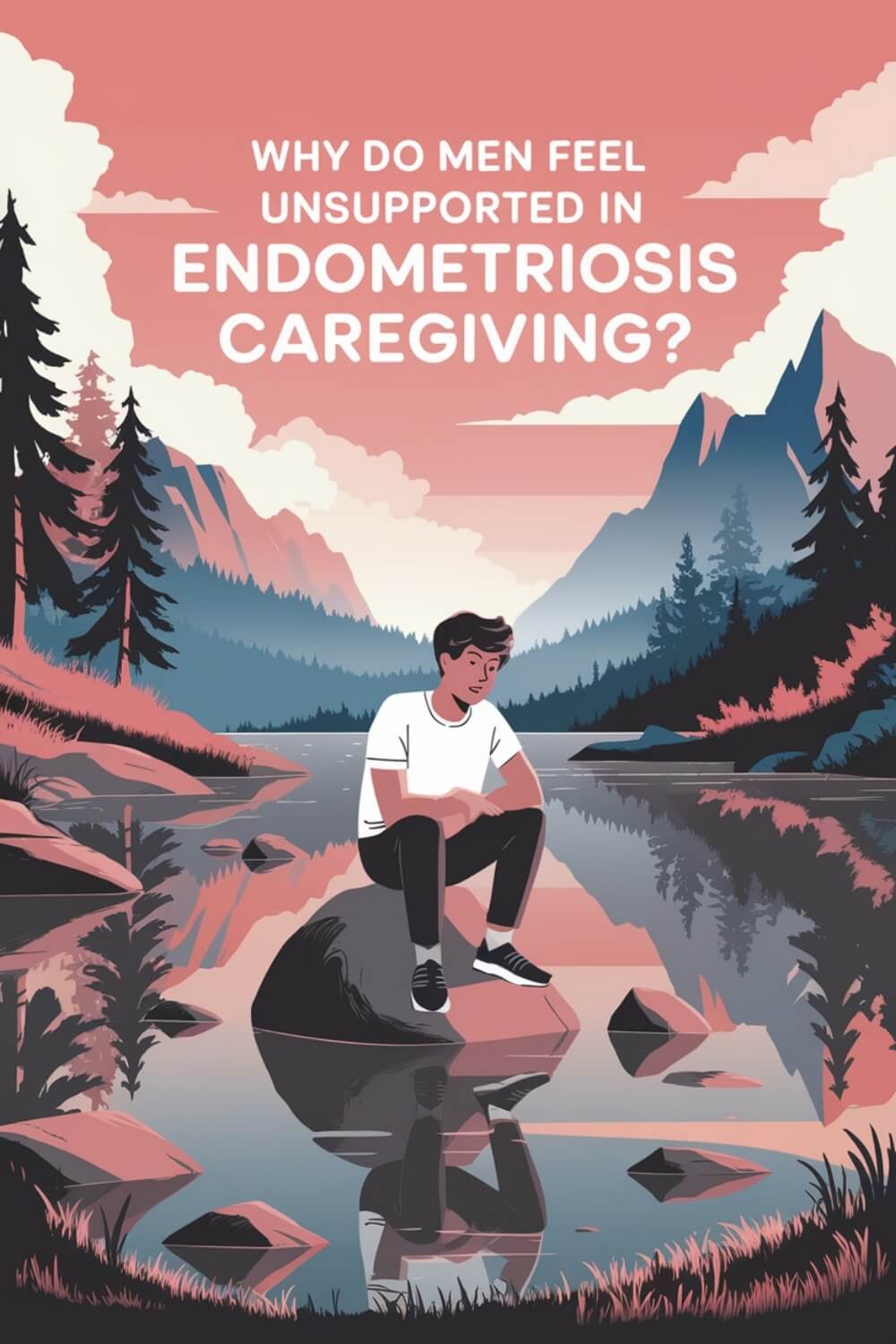
Gender-Based Barriers in Chronic Disease Management
Even with human rights progress and longer life spans in many countries, women face big hurdles in getting the care they need. These gender-based barriers are complex and tied to societal norms, gender roles, and health disparities that hit women’s women’s health hard.
Women with chronic illnesses often face mental health issues. They deal with social determinants like stigma, bad healthcare experiences, and family duties that make it hard to focus on their health. This can make it worse for women’s voices to be heard, adding to health disparities.
Healthcare systems can also hold women back, making them feel like they’re not believed or valued. Cultural views of women’s bodies and gender roles make things even tougher. Women’s pain and symptoms are often not taken seriously by doctors.
It’s key to tackle these gender-based barriers to better women’s health and ensure fair care access. By understanding women’s unique needs, healthcare and policy makers can build more inclusive, patient-centered systems. This will help women take charge of their chronic disease care.
Cultural and Socioeconomic Factors Affecting Women’s Health
Cultural and socioeconomic factors greatly impact women’s health. Women often take on more caregiving roles, affecting how they manage chronic conditions. Social determinants of health like low education and poverty can lead to lifelong struggles. These factors deeply influence how people view health and seek care.
Women’s ability to make decisions and access resources also affects their health. For example, the Australian National Disability Insurance Scheme (NDIS) has a female participation rate of only 37%. This shows women’s health needs and caregiving roles might not be fully considered.
Research also indicates that women may undervalue and underpromote their needs when it comes to negotiating services. This can make it harder for them to advocate for themselves in schemes like the NDIS. This situation can affect the quality of care and support for women with chronic conditions.
In conclusion, it’s vital to understand the complex interplay of cultural and socioeconomic factors for women’s health. By addressing these barriers and tailoring healthcare services, we can work towards better health outcomes for all women. This is true regardless of their background or circumstances.
| Statistic | Percentage |
|---|---|
| Caregivers who were female | 74% |
| Caregivers who were white | 55% |
| Caregivers who were patient spouses | 60% |
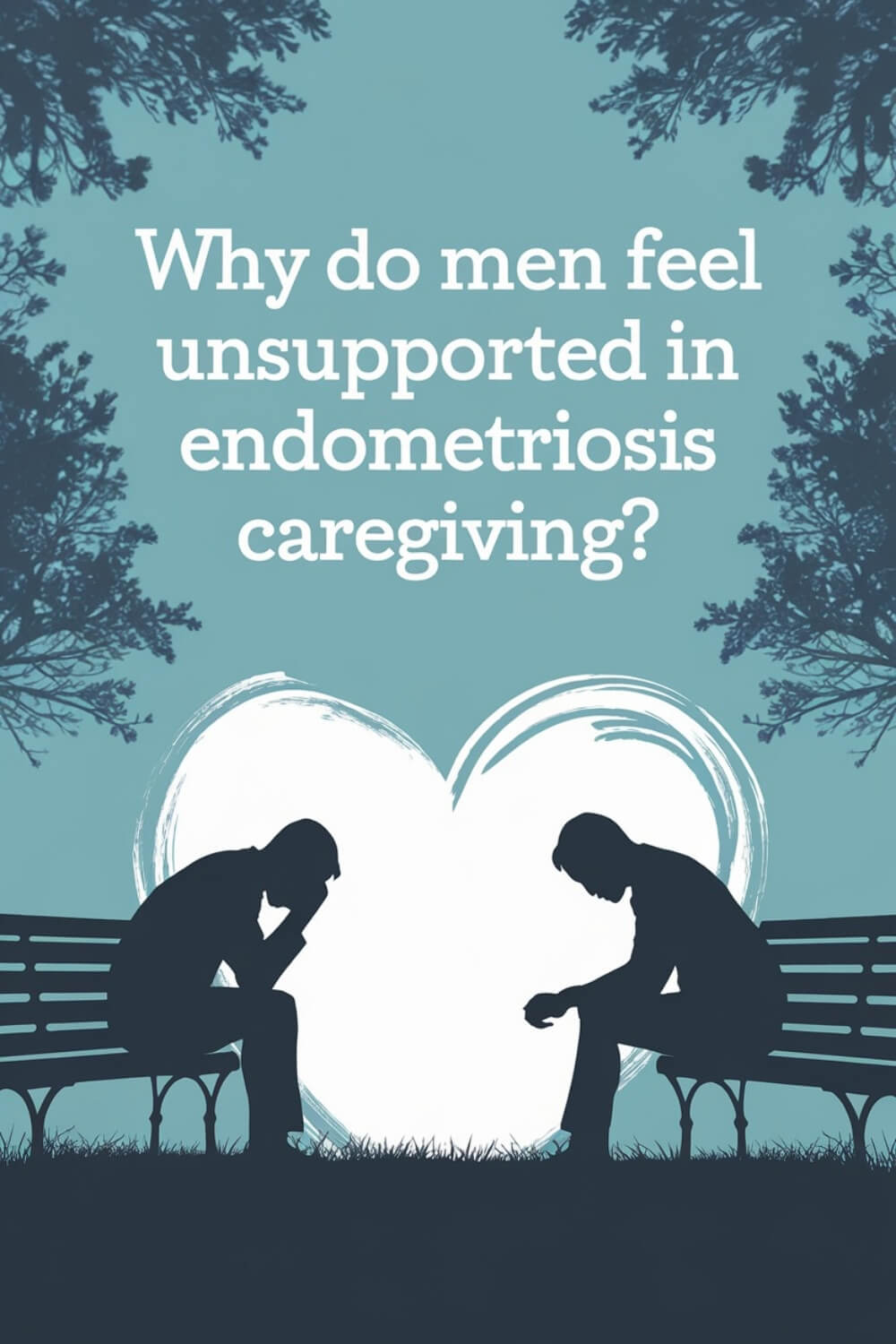
Introducing “Endo-Tool: Endometriosis for Men”
As an endometriosis caregiver, I know the special challenges of supporting a partner with this illness. I wrote “Endo-Tool: Endometriosis for Men” to help men like me. My wife, who has endometriosis, helped me write it. This guide helps men understand endometriosis, offers caregiving tips, and talks about the emotional impact of supporting a loved one.
The “Endo-Tool: Endometriosis for Men” e-Book is free to start with and offers a 33% discount on the full book. It also has discounts on other tools. It covers symptoms, stages, causes, types, treatment, and more. I hope it helps men feel heard and understood as caregivers, who are often overlooked.
- The book includes a quiz focused on the basic facts about endometriosis, helping men better understand this complex medical condition.
- Strategies for managing flare-ups and the day-to-day disruptions of endometriosis are highlighted, stressing the need for patience, understanding, and communication.
- The mental health implications of endometriosis, including anxiety or depression from chronic pain, are discussed. It encourages partners to offer emotional support and advocacy.
Endometriosis affects couples deeply, changing daily life to manage pain and flare-ups. With “Endo-Tool: Endometriosis for Men,” I want to give men the knowledge and tools to support their partners better. Together, they can face this challenging journey.
The Gender Pain Gap: Downplaying Women’s Pain
Forty-eight percent of people think there’s a “gender pain gap” in how pain is seen and treated between genders. Women’s pain is often not taken as seriously as men’s. This gap can hurt women’s well-being, confidence, and career chances.
For Black women, the racial healthcare gap makes things worse. Stereotypes say Black people feel less pain. A lack of diversity in industries means fewer treatments and products for minority groups.
Lack of Diversity Contributing to the Gap
Only 36% of men think a gender pain gap exists. This makes it harder to notice women’s pain. Companies without diversity risk losing talent because they don’t meet women’s health needs.
Women are more likely to leave their jobs due to pain and lack of support. This leads to higher turnover and costs for companies. Teams with more women are 25% more likely to do better financially.
To fix the gender pain gap, we need better education for healthcare workers about women’s health. We also need earlier diagnosis and more mental health support, mainly for marginalized groups. Fighting gender bias and pushing for women’s health education is key to fair care.

Impact on Employees and Companies
The gender pain gap can make workplaces toxic. It affects women’s well-being, productivity, and job happiness. Women might feel less valued because of their health issues.
This can stop them from growing in their careers. They might miss out on promotions and leadership roles.
This lack of support hurts both employees and companies. Forty-eight percent of people believe there is a “gap” in the identification and treatment of pain between genders, often due to women’s pain not being taken seriously. Only 36% of men think there’s a gender pain gap. This makes it harder for them to understand women’s challenges.
Companies can benefit from diversity and inclusion. Gender-diverse teams are 25% more likely to financially outperform less diverse companies. But ignoring women’s health can lead to legal problems.
Companies should focus on creating a supportive culture. They should value employee well-being and support those with chronic health issues. This includes flexible work, paid sick leave, and training for empathy.
By caring for all employees, companies can boost retention and productivity. They become employers of choice, attracting the best talent. This creates a positive and supportive work environment.
Strategies to Support Women’s Health at Work
To close the gender pain gap, companies must take proactive steps. They should provide education and training on women’s health and unconscious bias. This helps integrate the gender pain gap into diversity and inclusion programs, making the workplace more inclusive.
Providing Education and Unconscious Bias Training
Implementing employee education initiatives is key. These programs should cover topics like menstrual health, gynecological conditions, menopause, and mental health. This fosters a supportive environment for women in the workforce.
It’s also important to address unconscious biases that may affect women’s health concerns. Tailored training can help employees recognize and mitigate these biases. This leads to more equitable and compassionate support for all employees, regardless of gender.
By supporting women’s health at work, organizations can close the gender pain gap. They can also create a more inclusive and thriving workplace that benefits everyone.
Fostering an Inclusive and Supportive Culture
Working in the workplace, I’ve learned how key it is to have a supportive culture. Studies show women often feel lonely as they rise in their careers. Many choose to step back or leave because of the emotional strain.
Companies need to act to make sure everyone feels important and supported. They should make breaks normal, check in regularly, and offer flexibility for a better work-life balance. Also, strong mental health support and groups for employees can help everyone feel part of a community.
Putting employee well-being first and creating an inclusive workplace is good for everyone. As people live longer, caring for their mental and physical health becomes even more important. We can make workplaces where everyone can grow and succeed, both at work and in life.


About Me
Hi, I’m Lucjan! The reason why I decided to create this blog was my beautiful wife, who experienced a lot of pain in life, but also the lack of information about endometriosis and fibromyalgia for men…
Source Links to Why Do Men Feel Unsupported in Endometriosis Caregiving
- https://www.today.com/health/essay/endometriosis-nearly-ruined-life-marriage-rcna76309
- https://link.springer.com/article/10.1007/s12529-023-10230-w
- https://www.cambiahealth.com/sites/default/files/cambia-files/resources/Cambia Wired for Care Whitepaper.pdf
- https://www.ncbi.nlm.nih.gov/pmc/articles/PMC6388408/
- https://www.ncbi.nlm.nih.gov/pmc/articles/PMC10642495/
- https://www.ncbi.nlm.nih.gov/books/NBK569979/
- https://www.thenegativespace.life/allison/
- https://www.ncbi.nlm.nih.gov/pmc/articles/PMC10942128/
- https://digitalscholarship.unlv.edu/cgi/viewcontent.cgi?article=1036&context=psychology_fac_articles
- https://www.who.int/news-room/fact-sheets/detail/corporal-punishment-and-health
- https://www.acog.org/clinical/clinical-guidance/clinical-consensus/articles/2022/09/general-approaches-to-medical-management-of-menstrual-suppression
- https://assets.publishing.service.gov.uk/media/6255a278e90e0729f4400c1b/Womens_Health_Strategy_written_responses_from_organisations_and_experts.pdf
- https://www.ncbi.nlm.nih.gov/pmc/articles/PMC10659542/
- https://equityhealthj.biomedcentral.com/articles/10.1186/s12939-021-01571-7
- https://bmccancer.biomedcentral.com/articles/10.1186/s12885-018-4172-5
- https://worryhead.com/loving-a-woman-with-endometriosis/
- https://www.ncbi.nlm.nih.gov/pmc/articles/PMC4655079/
- https://www.womenshealthcouncil.org.nz/wp-content/uploads/2023/03/AWHC-submission-on-the-Womens-Health-Strategy-24-3-23.pdf
- https://www.academia.edu/91205557/Meanings_of_Pain
- https://www.testgorilla.com/blog/gender-pain-gap/
- https://www.linkedin.com/posts/matt-johnston-86a8aa45_endometriosisawarenessmonth-workplacewellbeing-activity-7176512283756363776-wJYv
- https://digitalcommons.law.ou.edu/cgi/viewcontent.cgi?article=2228&context=olr
- https://www.gov.uk/government/calls-for-evidence/womens-health-strategy-call-for-evidence/outcome/85ac4eea-d13f-4942-9ccb-f3c439fe548e
- https://www.britsoc.co.uk/media/26678/medsoc24_abstract_book.pdf
- https://www.linkedin.com/posts/jenrisi_mentalhealthawarenessmonth-activity-7199439247035015170-n7e0
- https://pulsevoices.org/stories/his-mothers-son/
